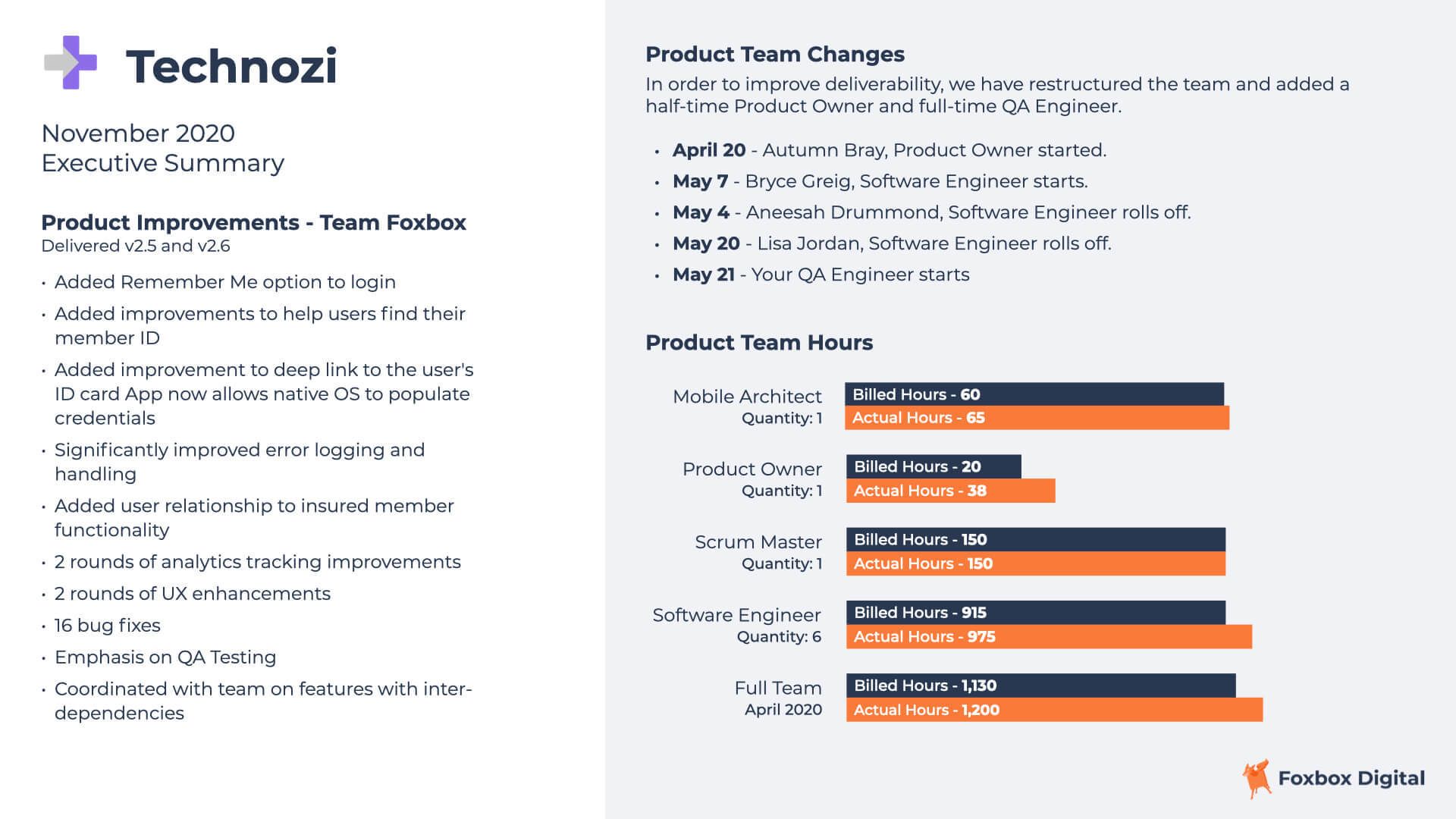How We Handle Executive Reporting Via Dashboards
If you were to ask members of your leadership team what their most important goal is, how many would say improving the strategy of the business? Probably quite a few. But for far too many organizations, leadership is more caught up in day-to-day operations than they are in high-level strategy concerns.
For example, leadership at a fast-growing company might be spending a lot of time asking for status reports, but neglecting to have conversations around how to leverage a team's achievements to provide the greatest impact.
We’ve seen too many leaders waste their precious time talking about what they want to know, without having what they what they actually need to know right at their fingertips. That's why we have crafted a reporting structure that provides leadership with what they need to focus on to make the right decisions.
Providing executive dashboard reporting
At Foxbox Digital, we like to keep all stakeholder and executive visibility into development and billing with a high-level summary. Without being bogged down by day-to-day details, we send this executive dashboard every month.

The dashboard is meant to track all cross-functional work and keep strategy at the center. It shares important contributions from all team members involved. Each section is broken down to provide a way of tracking and understanding progress toward high-level goals.
Facilitating better planning and decision making
For many of our clients, multiple stakeholders and decision-makers both within and outside of an organization need to be kept up to date regarding projects and deliverables. The executive dashboard is intended to keep all parties involved on the same page and ensure they are receiving highly accurate and consistent information.
Beyond having a single source of truth to share with colleagues, executive dashboards are often used for budgetary planning purposes. We provide an infographic showing the breakdown of hours attributed to each team member, and what particular piece of the project each member is working on. This allows our clients to understand what areas require the most work and how to accurately plan for the future.
In addition, we make sure to call out changing team members and other important changes to resources. This is important because it allows our client be aware of changing needs like equipment and access that will have a large impact on the team.
When not enough data becomes too much data
Our goal is to provide leadership with enough information to make strategic decisions, but not too much information that will overwhelm them. This allows our clients to spend less time sifting through data, and more time on strategic analysis.
We utilize feedback from each of our clients to understand what is most important to them, and make updates to the dashboard accordingly to meet their needs. We start by discussing business objectives and the key questions that need to be answered—and then go seek out the right data. Unfortunately, this process at many other agencies is the reverse of what it should be.
If you are looking for a partner that provides transparency and strategic insights, let us know and we can discuss our services and reporting in more detail.